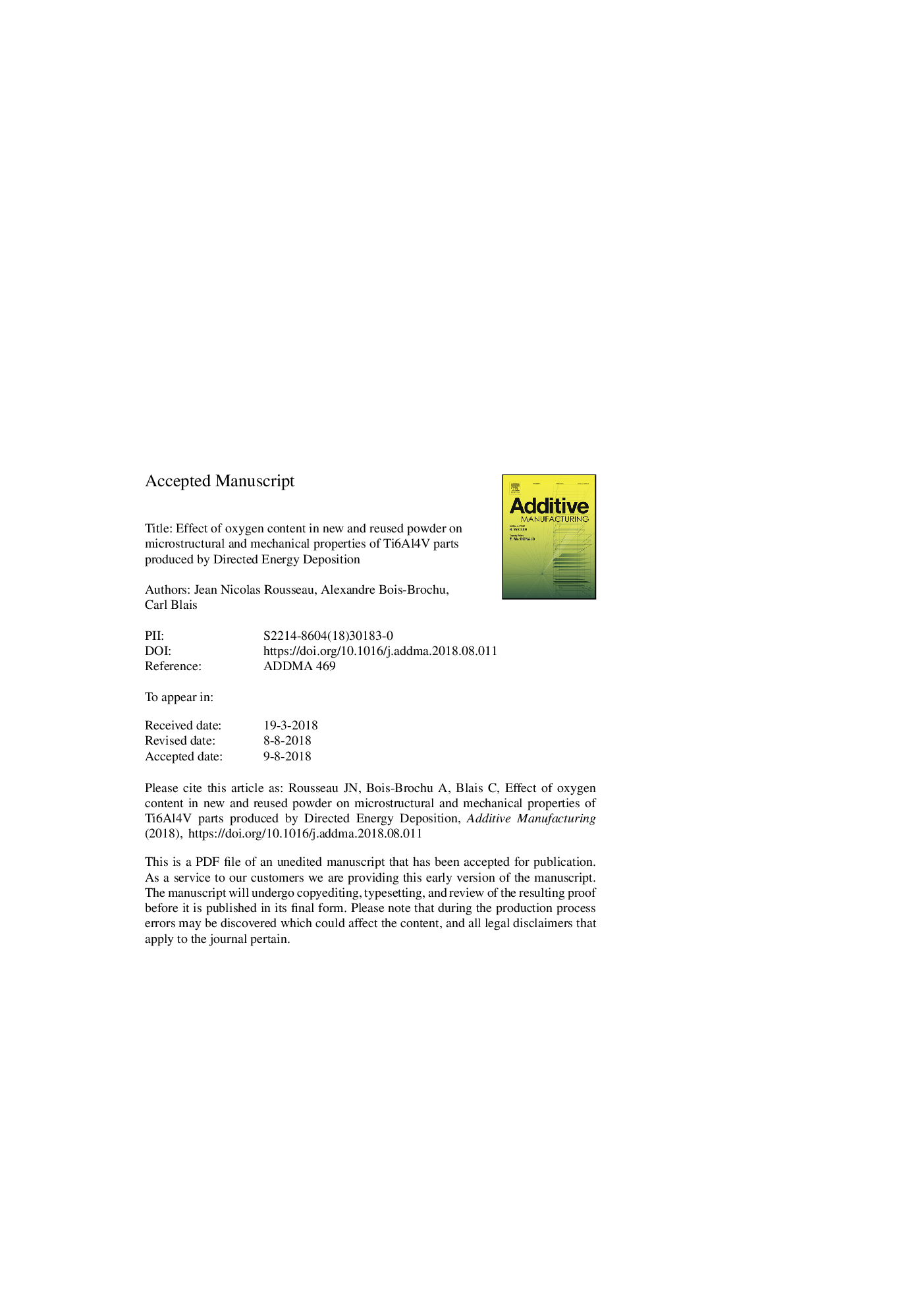| Article ID | Journal | Published Year | Pages | File Type |
|---|---|---|---|---|
| 11004127 | Additive Manufacturing | 2018 | 29 Pages |
Abstract
Some AM processes such as directed energy deposition (DED) have typical powder usage efficiencies ranging between 40 and 80%. Since, for a given alloy, powder cost is proportional to its purity, choosing a less expensive powder or reusing powders is interesting for economical and environmental reasons. The work summarized below studied the effect of oxygen content in Ti6Al4V powders on mechanical properties of AM parts fabricated by DED. Three different powders with increasing oxygen content were used to produce specimens and characterize its effect on microstructure and tensile properties before and after heat treatment. Our results show that no clear oxygen pick up was measured from either powder recycling or during printing of parts. Only coarsening of the particle size distribution and the presence of fragmented particles was observed for the recycled powder. Comparing the chemistry of parts vs that of powder feedstock it was determined that for all the tests, the Al content was slightly lower in the parts and that no significant loss of vanadium was noted when printing with new (fresh) powders. On the other hand, V loss was significant in parts made with recycled powders, although still leaving them within acceptable chemistry to respect their original grade 5 classification.
Related Topics
Physical Sciences and Engineering
Engineering
Industrial and Manufacturing Engineering
Authors
Jean Nicolas Rousseau, Alexandre Bois-Brochu, Carl Blais,
